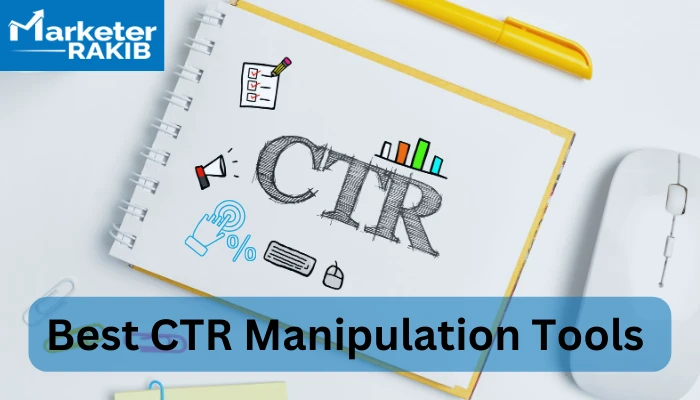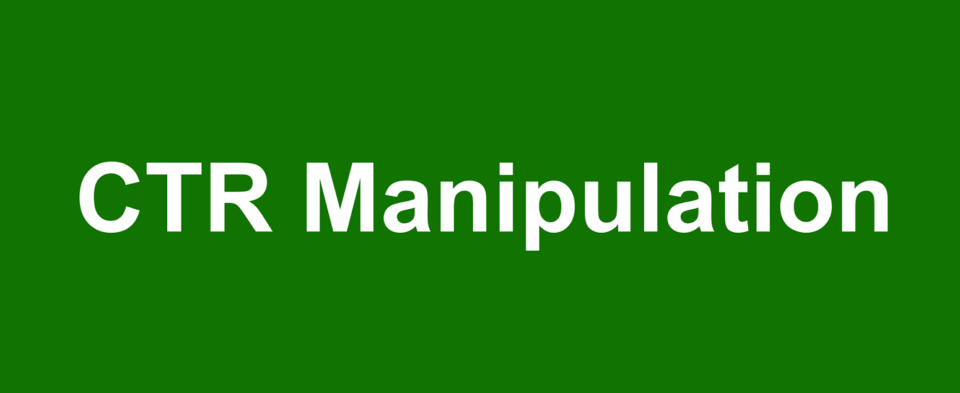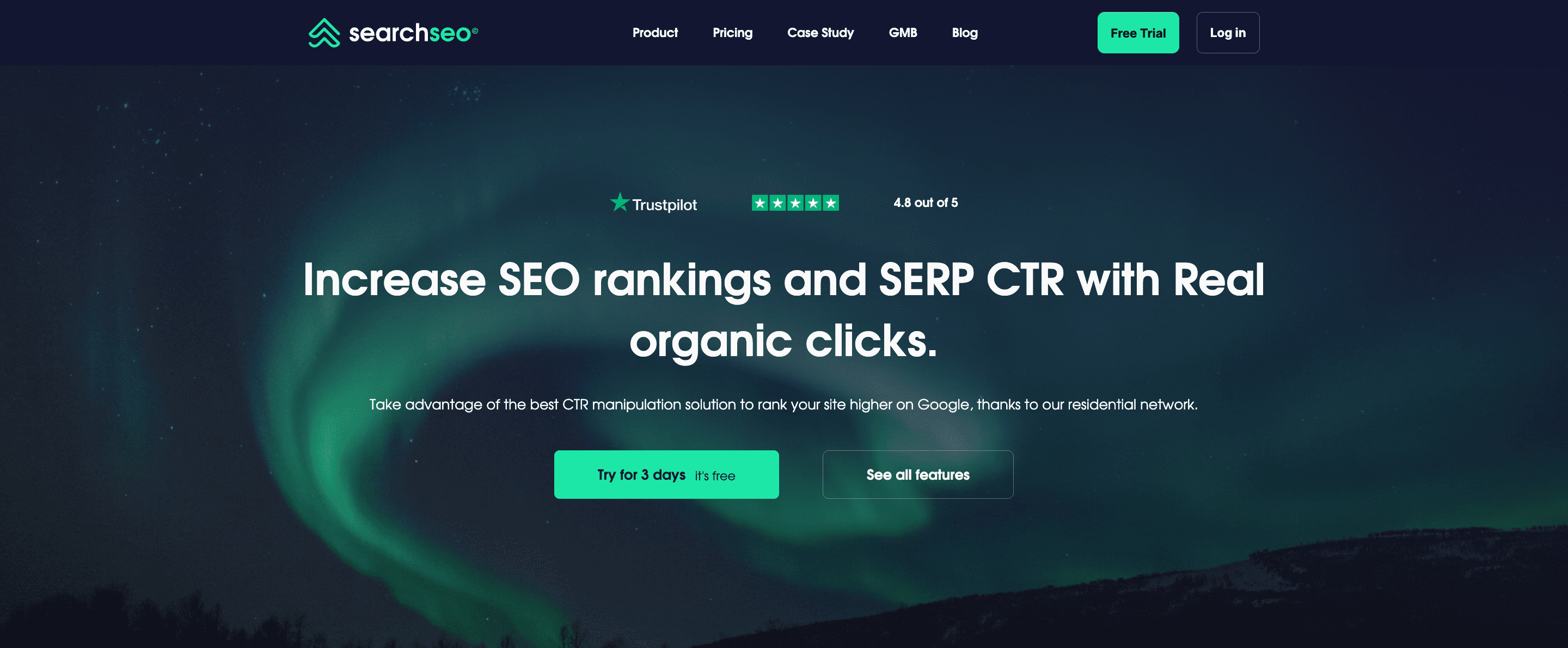Boost Your Brand Recognition With Strategic CTR Manipulation Press Release Campaigns
Wiki Article
Understanding CTR Control for Maximum Effect
In the electronic landscape, grasping click-through rate (CTR) adjustment is necessary for taking full advantage of the impact of your material. Understanding the crucial factors that affect CTR, such as audience interaction and timing, can empower you to craft extra efficient techniques.Recognizing Click-Through Price
 Click-Through Rate (CTR) is a vital statistics in digital advertising that evaluates the effectiveness of online advertisements and material in driving individual interaction. It is determined by splitting the number of clicks an ad or link receives by the number of times it is presented, after that multiplying by 100 to express it as a percent. A higher CTR indicates that the material reverberates more effectively with the target market, consequently enhancing the overall performance of electronic campaigns.
Click-Through Rate (CTR) is a vital statistics in digital advertising that evaluates the effectiveness of online advertisements and material in driving individual interaction. It is determined by splitting the number of clicks an ad or link receives by the number of times it is presented, after that multiplying by 100 to express it as a percent. A higher CTR indicates that the material reverberates more effectively with the target market, consequently enhancing the overall performance of electronic campaigns.Recognizing CTR is necessary for marketing professionals as it offers insights right into user actions and choices. A low CTR might signal that the web content is not attractive or relevant to the audience, triggering a demand for reevaluation of placement, messaging, or layout. Conversely, a high CTR might highlight successful approaches, guiding future advertising efforts.
Additionally, CTR works as a relative tool to examine various campaigns, permitting online marketers to maximize their method and allot resources successfully. By evaluating CTR fads, companies can improve their content methods, boost audience targeting, and inevitably attain much better conversion prices. Hence, mastering CTR is essential to boosting digital advertising and marketing effectiveness and driving sustainable development.
Trick Factors Influencing CTR
A number of factors play a significant duty in determining the effectiveness of CTR in digital advertising. Among one of the most prominent components is the relevance of the content to the target audience - GMB CTR Manipulation. Ads or web links that reverberate with the users' interests and requirements are more probable to garner clicksAnother essential variable is the top quality of the headings and summaries. Engaging and compelling titles can capture attention, while clear and concise meta descriptions can provide context that urges customers to click via. In addition, the positioning of the web content, whether it's above the fold or integrated into a feed, can substantially impact exposure and, consequently, CTR.
Visual elements also add to CTR. Premium images or videos can improve engagement, making the material more attractive. Additionally, using call-to-action (CTA) switches plays an essential duty; convincing and well-placed CTAs can motivate customers to take activity.
 Finally, target market division is crucial. Customizing messages to details demographics ensures that the material gets to the appropriate people, optimizing the chances of clicks. Understanding these essential aspects is vital for properly controling CTR in electronic advertising initiatives.
Finally, target market division is crucial. Customizing messages to details demographics ensures that the material gets to the appropriate people, optimizing the chances of clicks. Understanding these essential aspects is vital for properly controling CTR in electronic advertising initiatives.Reliable Approaches for Optimization
To maximize click-through prices properly, marketing experts must implement a variety of targeted strategies tailored to their target market. Initially, crafting engaging headings is important; these must be succinct, interesting, and include appropriate keyword phrases that reverberate with the target market. A/B screening different headlines can disclose which variations capture focus most properly.Top quality photos or videos go that straighten with the material can bring in users' focus and encourage clicks. CTAs must create a sense of necessity or highlight a benefit, motivating immediate activity from the target market.
Another strategy is optimizing advertisement positioning and timing. Evaluating target market behavior data can aid marketing professionals establish the most effective times to release campaigns for optimum visibility. Furthermore, customizing web content based on individual choices and previous interactions can foster a stronger link and boost CTR.
Last but not least, maintaining mobile optimization is vital. With raising mobile use, guaranteeing that material comes and aesthetically appealing on smaller sized displays can significantly impact click-through rates. By accepting these methods, marketing experts can properly boost their CTR and drive better project efficiency.
Devices for Tracking CTR
Tracking CTR properly is essential for understanding the performance of marketing campaigns and making data-driven choices (LinkDaddy CTR Manipulation). To achieve this, numerous devices are readily available that promote precise tracking and analysis of click-through ratesGoogle Analytics is one of one of the most extensively utilized tools, offering extensive insights right into customer habits, including CTR for various web pages and projects. Its capability to section data allows marketers to analyze efficiency across different demographics and website traffic resources.
One more useful tool is SEMrush, which provides detailed records on CTR for paid search projects. It allows individuals to compare their CTR versus market benchmarks, providing crucial context for efficiency examination.
For social networks projects, systems like Hootsuite and Sprout Social offer incorporated analytics that track CTR across numerous social channels. These devices not just supply click-through data yet additionally enable for real-time monitoring of involvement metrics.
Additionally, A/B screening tools such as Optimizely can help marketing experts track CTR variations in between different advertisement versions or touchdown pages, disclosing which aspects drive greater visit the site interaction. Making use of these tools ensures marketing professionals can effectively keep an eye on and refine their approaches, eventually taking full advantage of the influence of their campaigns.
Evaluating and Changing Strategies
Although data collection is critical, analyzing and changing strategies based on click-through rate (CTR) understandings is where real optimization happens. A comprehensive evaluation of CTR data permits marketers to identify patterns, fads, and anomalies that can educate critical decisions. This includes segmenting information by demographics, tool types, and website traffic sources to establish what resonates with specific audiences.When understandings are collected, it is vital to adjust strategies appropriately. For circumstances, if a certain advertisement duplicate or aesthetic consistently underperforms, revising the message or creative elements can drive improvement. A/B testing works as a useful technique for assessing the effectiveness of these adjustments by useful reference comparing variants to see which generates a greater CTR
 Moreover, timing and placement are critical aspects. Evaluating when and where advertisements are most efficient can bring about more targeted campaigns, maximizing exposure throughout peak interaction durations. Continual monitoring and iterative changes ensure that techniques stay straightened with evolving consumer habits and choices. Inevitably, a data-driven approach to evaluating and changing methods will certainly generate significant gains in CTR, leading to improved general advertising and marketing performance and ROI.
Moreover, timing and placement are critical aspects. Evaluating when and where advertisements are most efficient can bring about more targeted campaigns, maximizing exposure throughout peak interaction durations. Continual monitoring and iterative changes ensure that techniques stay straightened with evolving consumer habits and choices. Inevitably, a data-driven approach to evaluating and changing methods will certainly generate significant gains in CTR, leading to improved general advertising and marketing performance and ROI.Verdict
By executing effective methods for optimization and utilizing ideal tools for tracking efficiency, web content developers can significantly improve involvement. The integration of these aspects will certainly guarantee that web content resonates with the target audience, optimizing impact in a competitive electronic landscape.In the electronic landscape, mastering click-through rate (CTR) adjustment is important for optimizing the impact of your material.Click-Through Price (CTR) is an essential statistics in electronic advertising and marketing that quantifies the efficiency of on the internet promotions and content in driving user interaction. A greater CTR shows that the web content reverberates more efficiently with the target audience, consequently boosting the total efficiency of electronic campaigns.
A low CTR may signal that the content is appropriate or not enticing to the target market, motivating a demand for reevaluation of layout, messaging, or positioning. By examining CTR patterns, services can fine-tune their material methods, enhance audience targeting, and ultimately achieve better conversion rates.
Report this wiki page